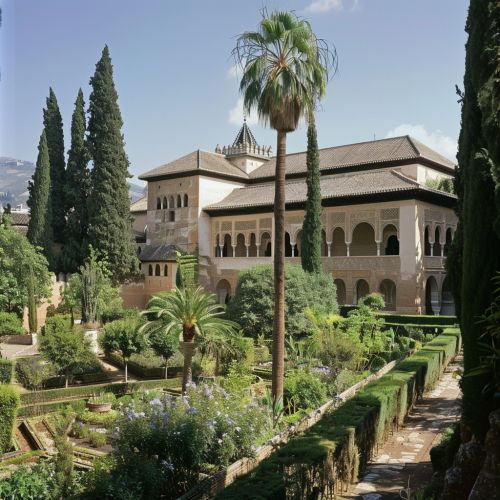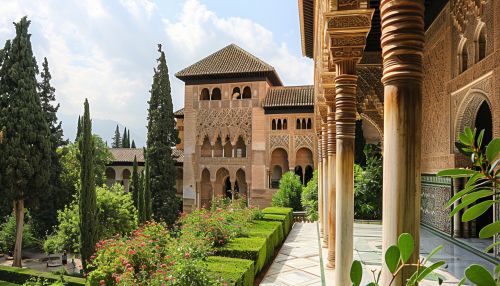Granada
History
Granada is a city rich in history, dating back to the Prehistoric times. The earliest settlements were established by the native Iberian tribes, followed by the Romans and Visigoths. The city's name, Granada, was given during the Islamic period when the Moors conquered the Iberian Peninsula in the 8th century. The city became the capital of the Emirate of Granada, the last stronghold of the Moors in Spain, which lasted until 1492 when it was conquered by the Catholic Monarchs, Ferdinand and Isabella.


The city's most iconic landmark, the Alhambra, was built during this period. This palace complex is a testament to the architectural prowess of the Moors, featuring intricate carvings, beautiful gardens, and stunning views of the city. The Alhambra, along with the Generalife gardens and the Albayzín district, is a UNESCO World Heritage Site.
Geography
Granada is located at the foot of the Sierra Nevada mountains, at the confluence of four rivers, the Beiro, the Darro, the Genil and the Monachil. It sits at an average elevation of 738 meters above sea level, yet is only one hour from the Mediterranean coast, the Costa Tropical.
Climate
The city experiences a hot-summer Mediterranean climate with hot summers and cool winters. Due to its proximity to the Sierra Nevada mountains, Granada also experiences a significant diurnal temperature variation.
Economy
Granada's economy is largely based on tourism, with visitors flocking to see the Alhambra and the city's other historical sites. The city also has a strong economy in the service sector, and is a center for learning, being home to the University of Granada.
Culture
Granada is known for its vibrant culture, which is a blend of its Moorish past and Spanish traditions. The city is famous for its flamenco performances, especially in the Sacromonte district, and its cuisine, which includes tapas and local dishes like gazpacho and piononos.
